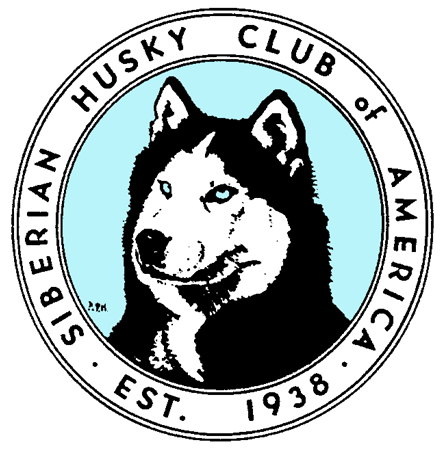Printable Information Sheet SPS1/SHPN1
Siberian Husky - Shaking Puppy Syndrome, Type 1 (SPS1)
Shaking Puppy Syndrome 1 (SPS1) is a newly (2012) identified neurologic disease (along with Siberian Husky Polyneuropathy 1) of Siberian Huskies. It is a debilitating nervous system disease that impacts an affected dog’s ability to walk. SPS1 causes mobility issues very early on and ultimately sudden death by the time the affected dog is 2 years of age.
History
Another neuropathy affecting Siberian Huskies, Siberian Husky Polyneuropathy 1 (SHPN1), was first noticed in 2008 by a Siberian Husky breeder and it was while investigating SHPN1 that SPS1 was first noticed. While researching SHPN1 the investigators noticed a subset of affected dogs that had similar, but different neurological signs that developed at an earlier age. Further research identified a different genetic mutation than for SHPN1 and the disease was named Shaking Puppy Syndrome 1 (SPS1).
Extensive testing was performed which included muscle biopsies, electrophysiological testing and testing for environmental factors which were ruled out. Testing was also performed to evaluate whether these diseases were the same as similar diseases – Alaskan Malamute Polyneuropathy (AMPN) seen in Alaskan Malamutes and Alaskan Husky Encephalopathy (AHE) seen in Alaskan Huskies – which concluded that SHPN1 and SPS1 are NOT the same as AMPN and AHE but are rather two newly identified genetic diseases of Siberian Huskies.
Signs
SPS1 becomes noticeable when puppies start to walk at 2 weeks of age. Signs seen include tremors, difficulty walking and incoordination which most often resolve within a few weeks. Unlike most other forms of shaking puppy syndrome in other breeds, all affected SPS1 dogs evaluated to date experienced sudden death by 2 years of age.
Videos of affected dogs can be viewed at Siberian Husky Health Panel | College of Veterinary Medicine
Research
Research was begun at UC-Davis College of Veterinary Medicine and, via collaboration, the research was continued at the University of Minnesota College of Veterinary Medicine. With new technology using genome wide DNA sequencing, the University of Minnesota College of Veterinary Medicine’s Canine Genetics Lab in collaboration with UC-Davis was able to identify the gene mutation responsible for SPS1.
SPS1 appears to be inherited in a simple autosomal manner, based on current data, and appears to be fully penetrant meaning that all affected dogs will show similar clinical signs of the disease.
In February 2023 genetic testing became available for this disease.
Treatment
No treatment is currently available for SPS1.
Testing
The University of Minnesota College of Veterinary Medicine’s Canine Genetics Lab offers testing for both SHPN1 and SPS1. Testing can be performed via check swabs, blood, semen and also dewclaw and tail docking samples. Submission forms, protocols, fees and shipping directions are available through the University of Minnesota College of Veterinary Medicine’s Canine Genetics Lab link at: Siberian Husky Health Panel | College of Veterinary Medicine. Test results are accepted by the Orthopedic Foundation of America (OFA) and will be listed on a dog’s health screening information page.
Testing is used to more definitively diagnose affected dogs and to aid in guiding breeding decisions.
Testing identifies whether the dog is CLEAR – is unaffected and carries no copies of the mutation. A dog tested clear cannot pass the mutation on to its offspring.
A CARRIER – is unaffected and carries one copy of the mutation. A carrier will pass the mutation to half of its offspring.
AFFECTED – is affected and carries two copies of the mutation. An affected dog will pass the mutation on to ALL of its offspring.
Testing can be done at any age and needs to be done only once in a dog’s lifetime.
Breeding Recommendations
The Siberian Husky Club of America highly recommends all breeding dogs be tested for both SHPN1 and SPS1 as only through testing can the production of affected dogs be prevented and the incidence of these diseases decreased.
Dogs tested CLEAR can safely be bred to any dog as they will not produce any affected dogs.
Dogs tested as CARRIER should only be bred to a dog tested CLEAR to prevent producing any affected offspring.
AFFECTED dogs should never be bred to another AFFECTED or CARRIER dogs as affected offspring WILL be produced.
PLEASE NOTE:
While an affected dog could be bred, it should only be undertaken with excessive caution and knowledge. ONLY a dog of extreme merit that is affected should be considered for this and should ONLY be bred to a CLEAR which will produce all CARRIER and no affected offspring. Breedings of these offspring should then follow the above recommendations.
Removal of CARRIER dogs from a breeding program is NEITHER NECESSARY NOR RECOMMENDED but rather CARRIERS can and should be bred in a knowledgeable manner as outlined above.
Webinar by Health & Genetics Chair Dr. Kevin Snyder, DVM, MS, Diplomate of the ACVO Board-Certified Ophthalmologist Shaking Puppy Syndrome, Type 1 (SPS1) and Siberian Husky Polyneuropathy, Type 1 (SHPN1) Education and SHCA Testing Requirements
version 12.24